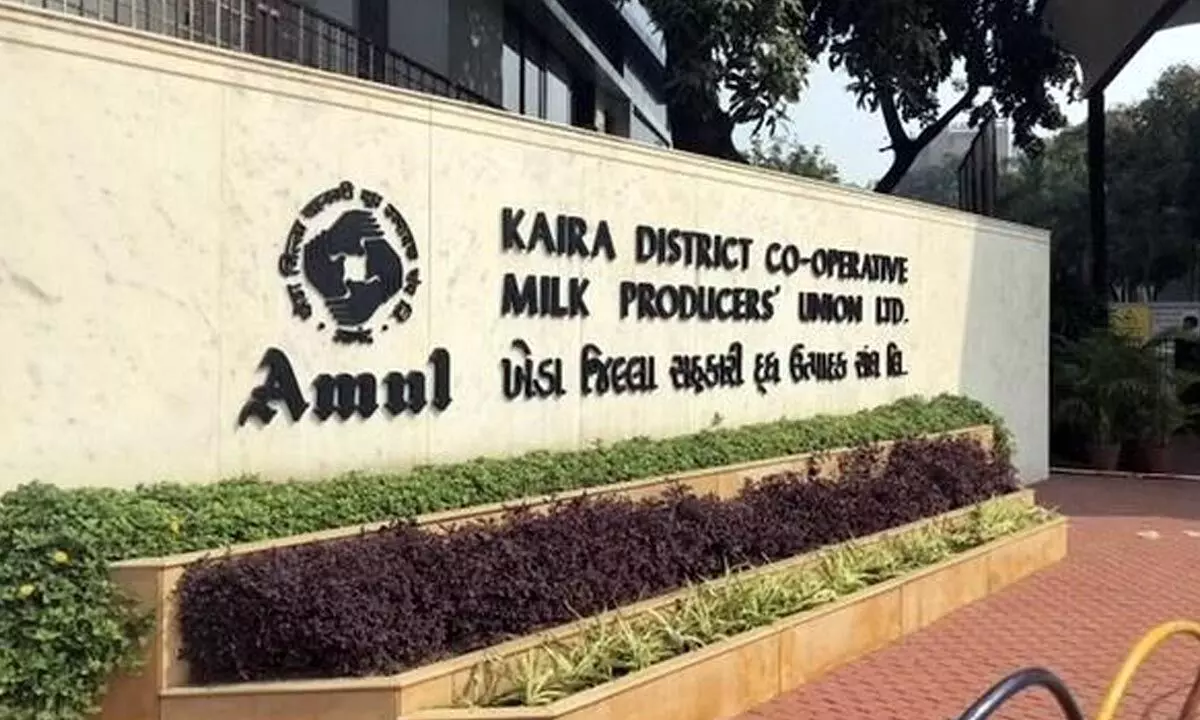The Amul story: Concern over top level changes
There seems to be turbulence at the top in dairy major, Amul as current managing director RS Sodhi has suddenly resigned from his post after a 12 year stint
image for illustrative purpose

There seems to be turbulence at the top in dairy major, Amul as current managing director RS Sodhi has suddenly resigned from his post after a 12 year stint. The reasons for the swift change of guard is being speculated about, but it seems to mirror the circumstances in which the present incumbent took over. At the time there was a controversy over the departure of the previous managing director, BM Vyas. Be that as it may, it is clear the dairy giant is likely to remain one of the biggest players, not just in India but in the world. It is listed as the eighth largest dairy processing entity globally and has now expanded into a wide range of areas.
The change at the helm is an apt occasion to take a look back at the history of this iconic institution that has become one of the country's most well known and loved brands. During Sodhi's tenure, it is reported, the organisation expanded from an annual turnover of Rs 8000 crore to the current level of around Rs 71,000 crore. The company is not just known for its products, but also its memorable advertising campaign spearheaded by the Amul girl in her polka dot dress making comments on current affairs. Big hoardings in major cities have shown her brandishing Amul products while having a witty dig at events ranging from politics to sports and film stars.
The launch of this unique venture took place shortly before independence. And its formation had ramifications for the entire country. The milk cooperative society movement that spawned Amul was forged at Anand in Kaira district of Gujarat in 1946 under the leadership of Sardar Patel and Morarji Desai. They came to the rescue of milk farmers who were then being exploited and treated unfairly on payment issues by the government of then Bombay state. Their leader, Tribhuwandas Patel sought advice from the Sardar who advised him to form a milk cooperative society at Anand itself. The initial venture was a tiny one but it expanded ultimately to become the genesis of a state wide cooperative societies union - the Gujarat Cooperative Milk Marketing Federation (GCMMF). It was a little later, in 1950 that Verghese Kurien, later to be known as the Father of the White Revolution, joined to assist the new venture.
The Kaira Union managed to set up pasteurising plants near the dairies and then went even further in the mid-50s to set up a butter and cheese producing factory. It took the name Amul from the Sanskrit word, Amulya, or priceless. It expands into Anand Milk Union Limited. As a result of the formation of the milk cooperative it was possible for the dairy farmers to get remunerative prices for their products for the first time. The establishment of the butter factory made their lives even better.
The success of the Anand-based milk cooperative societies impressed Prime Minister Lal Bahadur Shastri so much that he sought to replicate it all over the country. Kurien was roped in to lead the way as head of a newly formed National Dairy Deveopment Board (NDDB). The Amul model was then implemented in other states. And the rest, as they say, is history.
For most of the current generation, it is difficult to envisage an India where milk, butter and the entire range of dairy products have not been freely available and in surplus. But in the fifties and early sixties, milk was virtually rationed in the nation's capital under the then Delhi Milk Scheme. It was supplied in glass returnable bottles and sold in small booths where the number of litres provided was restricted for each family. Shortages of milk and milk products were part of life. Many middle class families preferred to procure milk through the traditional dairy farmers who kept milch cattle. It was felt this milk was purer and had more genuine fat content than the pasteurised and homogenised milk provided by DMS.
The whole scenario changed rapidly when NDDB was set up in 1965. A different set of booths were set up by the newly formed Mother Dairy and milk flowed freely from vending stations just by putting in the right amount of tokens.
Amul which sparked off this milk revolution all over the country, termed as Operation Flood at the time, went on to become one of the biggest dairy companies in the world. The advertising for the company with the little girl came to define the idea of Amul, which was young and contemporary. The idea of the mascot was conceived by the ad agency ASP under its director, Sylvester Da Cunha.
As for Amul itself, it now manufactures a wide range of dairy products including ice cream, milk based drinks and chocolate. The latest diversification has been into organic goods. As a result of replicating the Anand model, India has also emerged as the largest milk producer globally. The white revolution as it has been called, not only ensured that milk and milk products are available in plenty throughout the country, but also that farmers are given a fair price for their output.
Given the dairy major's leading role in the economy, the sudden shift at the top level becomes an issue of concern. The reasons for the change need to be spelt out clearly by the board which has taken this decision. Amul remains a conglomeration of milk cooperative societies and it is thus essential that there should be transparency in the way in which top-level changes are carried out. This is all the more important as Amul is no ordinary organisation - it has shown the world that small farmers have big power when they band together into a cooperative framework.

